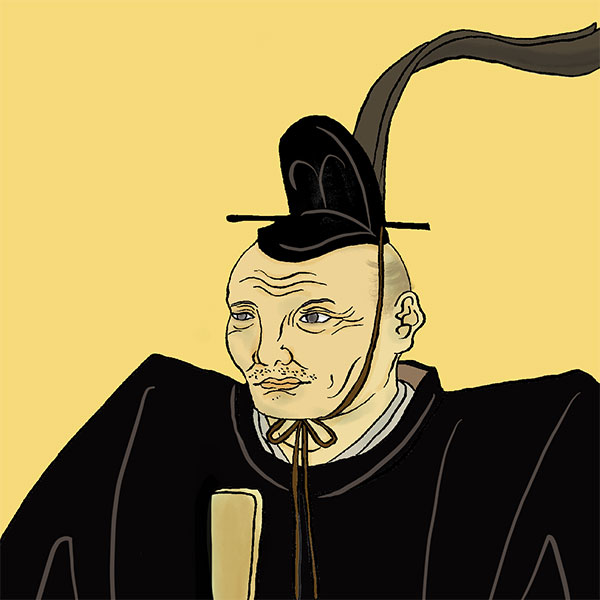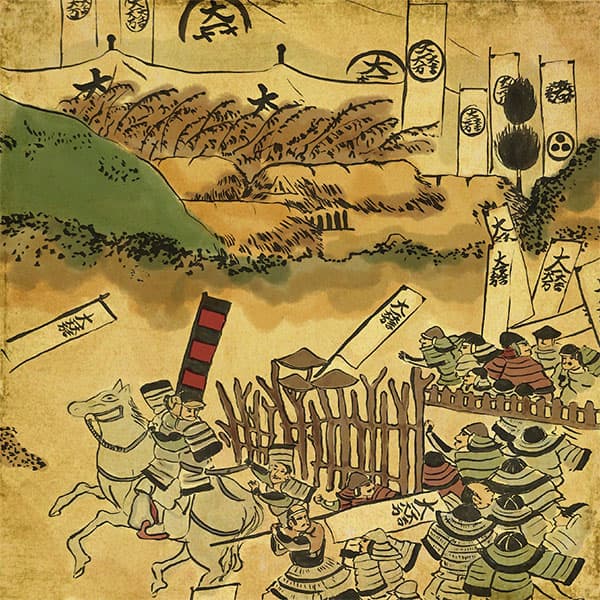Tadatoshi Hosokawa (1/2)son of garasha

Tadatoshi Hosokawa
- Article category
- biography
- name
- Tadatoshi Hosokawa (1586-1641)
- place of birth
- Kyoto
- Related castles, temples and shrines

Kumamoto Castle

Kokura Castle

Nakatsu Castle
- related incident
During the Sengoku period, Akechi Mitsuhide was the one who forced Oda Nobunaga to commit suicide during the Honnoji Incident. Mitsuhide has a daughter named Garasha. Tama became the wife of Tadaoki Hosokawa, and the two had several children. However, just before the Battle of Sekigahara, Tama was forced to commit suicide. Hosokawa Tadatoshi was born to Akechi Mitsuhide as his grandfather and Tama as his mother. Tadatoshi took over as head of the Hosokawa family and ruled Kumamoto. This time we will take a look at Tadatoshi Hosokawa.
Birth and mother Garasha
Tadatoshi Hosokawa was born in November 1586 as the third son of Tadaoki Hosokawa, who ruled Tango Province (present-day northern Kyoto Prefecture). His mother is Tama (Hosokawa Garasha), Tadaoki's legal wife.
His mother, Tama, was the daughter of Mitsuhide Akechi. In 1582, Mitsuhide caused the Honnoji Incident and forced his master, Oda Nobunaga, to commit suicide. Afterwards, Mitsuhide asked the Hosokawa family for help, but the Hosokawa family ignored his request. Furthermore, Tadaoki Hosokawa imprisoned Mitsuhide's daughter Tama.
Two years later, with the intercession of Hideyoshi Hashiba (later Hideyoshi Toyotomi), Tama was transferred from her captivity in Tanba to the Hosokawa family's mansion in Osaka, but she continued to live under surveillance. . It was in this context that Tadatoshi was born.
Although she gave birth to Tadatoshi, she was constantly worried. Tadatoshi was in poor health, and his father, Mitsuhide Akechi, died as a result of the Honnoji Incident. In addition, the life of surveillance at the Hosokawa family continued. So Tama goes to the church to listen to the story, unobserved.
After visiting there several times, I converted to Christianity. However, it was more than five years before she confessed her conversion to her husband, Tadaoki Hosokawa, who had a violent temper.
Regarding Jade's conversion, it is also recorded in the reports sent by Jesuit missionaries to their homeland. Based on that report, Cornelius Hazard created a translation of ``History of the Church: The Catholic Faith Spread Throughout the World'', ``History of the Church in Japan: The Conversion of the Queen of Tango and the Christian Faith.''
From the translated book, Johann Baptiste Adolf, head of the Society of Jesus, wrote the screenplay, and the music was composed by Johann Bernhard Staudt for an opera called ``The Strong Woman: Also Known as Grazia, Queen of the Kingdom of Tango.'' The content of the opera is said to be particularly popular with the Austrian Habsburg family, as it is close to a true story.
Battle of Sekigahara and Mother's Death
After Hosokawa Tadatoshi was born, the country became the property of Toyotomi Hideyoshi. However, in 1598, Hideyoshi passed away. After Toyotomi Hideyoshi died, Tokugawa Ieyasu rose to power.
This rise of Ieyasu came into conflict with Mitsunari Ishida, the magistrate of Hideyoshi. Ishida Mitsunari was hated by other Toyotomi feudal lords, and Hosokawa Tadaoki also hated Mitsunari. Tadaoki quickly sided with the Tokugawa family, and Tadatoshi was sent as a hostage to Edo (present-day Tokyo).
Then, in 1600, Tadatoshi was 15 years old.
Kagekatsu Uesugi rises up against Tokugawa Ieyasu in Aizu (present-day Fukushima Prefecture). In order to subjugate Kagekatsu Uesugi, Ieyasu prepared an army to conquer Aizu and left Osaka. However, when Ieyasu arrived in the Kanto region, Ishida Mitsunari raised an anti-Tokugawa alarm in Osaka.
Mitsunari thought of taking hostage the wives and children of the feudal lords who had followed Ieyasu in Osaka. He also sent a messenger to the Hosokawa family and instructed them to move Tadaoki's wife, Tama, to Osaka Castle.
Tama rejected this, so the Ishida side sent out soldiers and surrounded the Hosokawa family's mansion. Tama, whose mansion was surrounded, resisted until the end and committed suicide (it is said that since Tama was a Christian, he did not commit suicide but had his servants kill him) and passed away. Tadatoshi learns of his mother's death in Edo.
In addition, his grandfather, Fujitaka Hosokawa, was defending his territory, Tango Province, but it was besieged by Ishida's forces. The enclave's territory, Kitsuki, Bungo Province, Kyushu, was protected by senior vassals such as Yasuyuki Matsui, but it was surrounded by the Ishida faction.
Tadatoshi lived through a turbulent period in which his father served in Ieyasu's army, his mother committed suicide in Osaka, his grandfather was surrounded by Ishida forces, and the enclave of Kitsuki in Bungo Province was also surrounded by Ishida forces. .
However, during this period, Tadatoshi continued to send information to his father Tadaoki, who was serving in Ieyasu's army, and kept in touch with him. Tadatoshi served as a close attendant to Hidetada Tokugawa, and soon after this, he celebrated his Genpuku (genpuku).
Then the Battle of Sekigahara happened.
The Battle of Sekigahara, fought between Tokugawa Ieyasu and Ishida Mitsunari, was a victory for Ieyasu. Tadatoshi's father, Tadaoki Hosokawa, was very active and became a feudal lord from Tango to Kokura, Kyushu, with a wealth of 390,000 koku.
Deciding the heir and Tadataka Hosokawa, the eldest brother
The Battle of Sekigahara in 1600 ended with a victory for the Tokugawa clan. By the way, December this year. His father, Tadaoki Hosokawa, disinherited his eldest son, Tadataka Hosokawa, and excluded him from the list of successor candidates. There are various theories, but the main reasons are as follows.
Tadaoki's wife Tama died at his mansion in Osaka just before the Battle of Sekigahara. However, Tadataka's wife Chiyo runs away just before Tama's death. It is said that Tadaoki was angry at this and disinherited Tadaoki because his eldest son Tadataka protected his wife.
It is also said that the year before the Battle of Sekigahara, Toshinaga Maeda of Kaga Province plotted to assassinate Tokugawa Ieyasu. It is said that Toshinaga and Tadataka's wife, Chiyo, were brothers by the same mother, and that the Hosokawa family was also suspected of being complicit in the assassination, so they were disinherited to dispel any suspicions.
In both cases, Tadaoki Hosokawa disinherited Tadataka. Tadataka became a monk and moved with his wife to live with his grandfather Fujitaka Hosokawa in Kyoto. The second son Kokiaki and third son Tadatoshi are candidates to succeed the Hosokawa family.
His second son, Koshu, served in the Battle of Sekigahara and achieved great results, becoming the lord of Kokura Castle. On the other hand, the third son, Tadatoshi, was taken hostage in Edo and did not accomplish much. However, by being in Edo, he became close friends with Hidetada Tokugawa and the children of Tokugawa vassals, and formed a powerful relationship with them.
His father, Tadaoki, only disinherited his eldest son, Tadataka, and did not decide on a successor for a while. However, in 1604, Tadaoki fell ill. The shogun, Tokugawa Ieyasu, and his heir, Tokugawa Hidetada, recommended that Tadatoshi be chosen as his successor.
After this, Tadaoki recovered from his illness and decided on Tadatoshi as his number one successor candidate. Therefore, he returned Tadatoshi, who was in Edo, to Kokura, and sent his second son, Koshu, to Edo as a hostage. However, along the way, Koshu became a monk and ran away to Kyoto, where his grandfather Fujitaka and older brother Tadataka lived.
Osaka no Jin and second brother Hosokawa Koshu
His second brother, Koshu Hosokawa, who was sent hostage to Edo in place of Tadatoshi Hosokawa, ran away and took shelter with his grandfather, Fujitaka Hosokawa. However, in 1615, the Siege of Osaka, a battle between the Tokugawa and Toyotomi families, began. Koshu was invited by the Toyotomi family, and the previous year he entered Osaka Castle and fought valiantly. However, the Toyotomi family was defeated and fell into ruin. Koshu ran away and hid in Fushimi, but in the end he committed suicide.
- related incident

- WriterTomoyo Hazuki(Writer)I have loved history and geography since my student days, and have enjoyed visiting historical sites, temples and shrines, and researching ancient documents. He is especially strong in medieval Japanese history and European history in world history, and has read a wide range of things, including primary sources and historical entertainment novels. There are so many favorite military commanders and castles that I can't name them, but I especially like Hisashi Matsunaga and Mitsuhide Akechi, and when it comes to castles, I like Hikone Castle and Fushimi Castle. Once you start talking about the lives of warlords and the history of castles, there's a side of you that can't stop talking about them.







